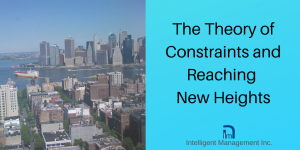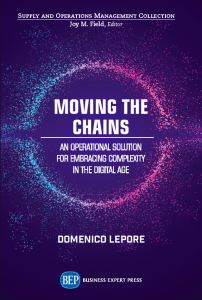
It’s complicated to shift our perception and the way we think if we live in a culture out of synch with what we are trying to achieve. That’s because we all live within networks of conversations that inevitably influence how we see the world. We are all ultimately free to choose our own path, but the “gravitational pull” of certain networks of conversations can be strong. This problem came up while working with an organization, let’s call them “Company X”, that aspires to excellence and an entrepreneurial mindset to guarantee economic sustainability. For decades, the dominant mindset in that part of the world has been quite the opposite – one of slotting into a safe job, preferably through personal connections. It is a disempowering and self-limiting worldview.
What to change and how, using the Theory of Constraints
So many organizations today are stuck in behaviors that are not getting them the results they deserve, but they don’t have a way to move beyond them. The way we DO things reflects the way we THINK about things and how we perceive our reality. So unless we can take a step back and examine our thinking and perceptions, we are destined to repeat the same behaviors and mistakes.
Whenever we work with an organization that wants to transform, overcome silos and operate as a Whole System, we begin with a Thinking Process from the Theory of Constraints. It is something that shifts perspective in a way that can change lives. How do we do that? It all starts with eliciting from the group what are called “Undesirable Effects”: all the factors that are causing immediate pain in the day-to-day work. They can range widely, from problems in delivering the product or service to getting along with co-workers, from management style to hiring practices, and everything in between. It’s important for there to be an atmosphere of transparency and trust so that people can freely express what is not right. As negative as this may sound, the list of Undesirable Effects is exactly what we need to build the transformation. It reveals the interconnected “symptoms” of a systemic issue that can only be addressed with systemic solutions. This is the first step in the Core Conflict process that we have used with dozens of companies over the years to achieve a higher awareness of what needs to change and why. It is the first step towards building solid, systemic solutions, an integrated strategy to achieve those solutions, a detailed road map for the transformation, and clarity on the exact actions that can then be scheduled into projects (at finite capacity) to achieve the transformation.
Taking the higher view
Before building the Core Conflict with “Company X”, I thought it might be helpful for them to have an image in mind. I told them about a real experience from when we moved from Italy to New York. We found temporary accommodation for a few months while the project we were part of got off the ground – a small, furnished apartment in a tower block in Brooklyn on the 10th floor. The windows all looked onto the back wall of the building right in front of us. So all we could see from that apartment was a large expanse of brick wall. As soon as we knew we would be staying on indefinitely, I asked the property manager of the same building if they had something unfurnished. He took me in the elevator up to the 34th floor and unlocked the door of a corner apartment. I had to catch my breath. The floor-to-ceiling windows revealed a panoramic view all the way from the Verrazzano bridge to the Empire State Building. At night, it was a light show of sparkling skyscrapers interspersed with blinking helicopter and ferry lights. And there was more. After we moved in, one day I stepped out of the elevator onto our floor and bumped into a girl who worked as a cleaner. She spoke little English but she grabbed my hand and led me to a doorway and up a short staircase that led to the roof of the tower block. We climbed out onto the roof and there in front of us was a 360 degree view of Brooklyn and Manhattan. I will never forget that view.
Riding that same elevator led to making several friendships with people in our building. There was something about the environment that gave people a sense of possibility.
When we used the Core Conflict with “Company X”, they courageously voiced their Undesirable Effects and we built their Core Conflict together. The process took them beyond their current reality to a higher view of the situation; they were able to see clearly what needed to be addressed and how to become unstuck. They were able to construct their own “elevator” and identify the actions that needed to be taken to lead them to a more desirable reality.
The only way to change is to understand, not just rationally but also emotionally, that an alternative exists. Change is hard but if we consider the impact that a teenager, Greta Thunberg, has had on the world we realize just how much can be achieved when we have a clear vision and the courage to take the first steps.
This post is by Dr. Angela Montgomery, Co-founder of Intelligent Management Inc.
SCHEDULE AN INTRODUCTORY CALL WITH US ‘






Leave a Reply